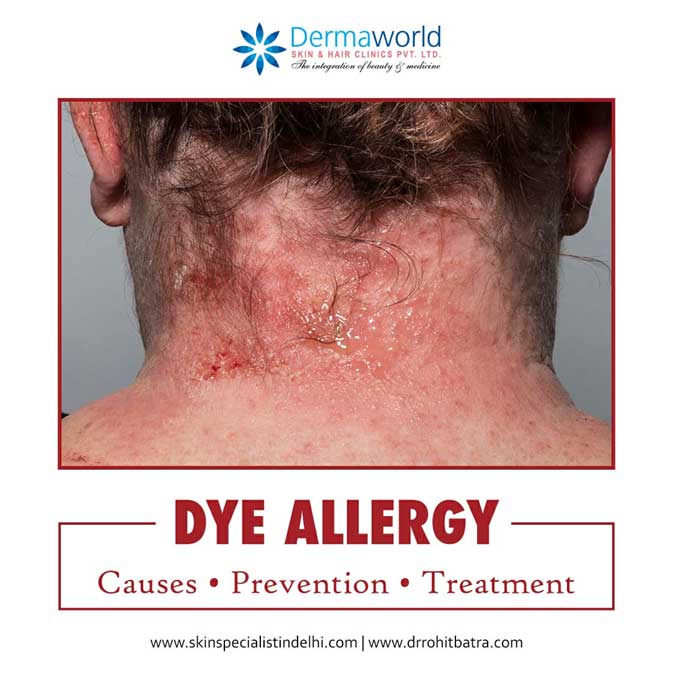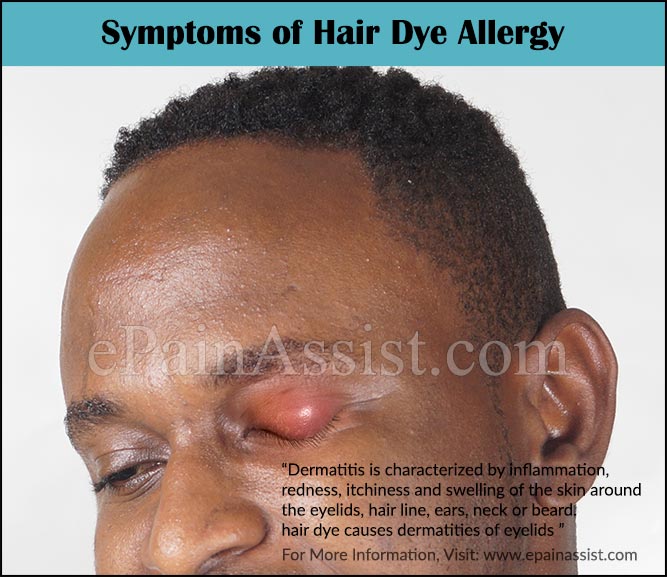Table Of Content

And people who become allergic to hair dye can develop reactions to many other common substances, transforming a simple cosmetic treatment into a big problem. Now, researchers reporting in ACS Sustainable Chemistry & Engineering have developed a range of permanent hair dyes that avoid the allergenic properties of traditional formulations. If an allergic reaction ensues as a result of hair coloring, it’s common for a series of dermatitis-like reactions to appear on the skin.
Treatment for Hair Dye Allergies
Hesitant about chemical hair dye? Your patients may appreciate these natural alternatives - MD Linx
Hesitant about chemical hair dye? Your patients may appreciate these natural alternatives.
Posted: Mon, 16 Oct 2023 07:00:00 GMT [source]
“Highlights and balayage are safer options because bleach does not contain PPD,” Paglionico says. Gloss and toner, which are used after highlights to add shine and soften freshly highlighted hair, typically don’t contain PPD and are applied to the hair, not the scalp. If you're experiencing an allergic reaction to hair dye, try calming down the symptoms by first washing the affected area with mild, fragrance-free shampoo and cool water. A cold compress reduces itching and swelling; over-the-counter antihistamines or corticosteroids may offer relief. If home patch testing or hair dyeing become a regular necessity, many people choose to go to an allergy clinic. Allergy clinics can do their own patch test to help determine what chemicals a person is intolerant of or allergic to.
Tips To Prevent Hair Dye Allergies
Gopalakrishnan Venkatesan and colleagues wanted to create new alternatives that would avoid the problems of PPD while still providing permanent hair coloring. Hair coloring products contain many ingredients that may irritate your scalp and cause allergic reactions. Symptoms range from mild to severe, and can take up to 48 hours to manifest. Paraphenylenediamine (PPD) and related chemicals are found in virtually all permanent and semi-permanent hair dyes. PPD is actually colourless but becomes coloured when oxidised by the release of oxygen from the second bottle. If you love changing your hair color, you may have experienced some unpleasant reactions after using hair dye products.
What You Need to Know About Allergic Reactions to Hair Dye
You should stop using the product and consult a doctor if you think you may have contact dermatitis from a hair dye. They can help determine the cause of your symptoms and recommend the appropriate treatment. With its anti-inflammatory properties, tea tree oil helps reduce the swelling and rashes caused by contact dermatitis, a common reaction to hair dyes. Cross-reactivity will occur in some people who have become sensitised to one of these chemicals.
Can You Dye Your Hair While Pregnant?

You can become allergic to a product or substance at any time, even if you’ve used it before. That’s why it’s important to do a patch test prior to using hair dye, even if it’s a tried-and-true brand. If you want to avoid the widest range of allergens, one of the most natural types of hair dye to use is henna. Make sure that you use only pure henna as others often have PPD added. Black and dark brown dye colors may contain the greatest concentration of PPD.
What One Editor Learned After a Scary Allergic Reaction to Hair Dye
Henna hair dye consists of organic ingredients, such as the leaves from the henna plant (Lawsonia Inermis). Reactions to hair-dye products are not uncommon, and range from very mild to quite severe. Many permanent and some semi-permanent hair dyes contain a chemical called paraphenylenediamine (PPD), which is a known irritant and allergen. The influence of cultural and commercial pressures to dye hair and the emphasis on the "culture of youth" play a significant role in this trend. As more people turn to hair dye to express themselves and maintain a youthful appearance, the risk of allergic reactions and their burden on healthcare services continues to grow. In a London retrospective survey, positive reactions to PPD on patch testing doubled over six years, reaching 7.1% in an adult contact dermatitis clinic.
Allergy to paraphenylenediamine
This can also sensitize your system, making you more vulnerable to an allergic reaction to hair dye. This is when it’s likely to cause allergic reactions in people who are sensitive to it. Again, the symptoms of a hair allergy differ from person to person, and your friend’s symptoms may be wildly different from yours. So, you should see a specialist immediately if you start noticing signs of discomfort after applying a new hair dye; don’t wait to see specific symptoms before acting. Eventually, he had to lose all of his hair, in addition to the severe scalp itching and swelling he experienced as a result of the botched coloring attempt. If the rim of your ear starts to flake, your forehead starts itching, or your eyelids, you can be certain you are experiencing an allergic reaction to your hair dye.
Paraphenylenediamine and allergy
You can buy a mild steroid cream at a pharmacy or a GP may prescribe it. Hair dyes containing PPD are safe to use, providing safety instructions are followed. These products are strictly regulated and there's a maximum limit to the amount of PPD the product can contain.
Safe Hair Dyes for Allergy Sufferers (PPD-Free and Hypoallergenic)
An overwhelming feeling of itching and burning is one of the most common reactions many women with sensitive skin may experience. Hair dyes, like many other products, contain a number of chemicals that can irritate your skin. This chemical is responsible for giving you long-lasting hair color that seems to appear more natural, when used on hair. Numerous substances used in hair dyes have the potential to harm the skin or trigger an allergic reaction. Hair dye allergy is not a trivial matter, and it should be taken seriously and treated promptly.
Read on to learn more on the symptoms and remedies of hair dye allergies. If your hair has lost its joie de vivre, it might be because of product buildup making your hair color look dull and trashy. Hairsprays, gels, and all sorts of hair products can cause residue that stays on your hair follicles and renders them heavy and oily. A small patch test can reveal a severe reaction to PPD, a sulfate intolerance, or any other discomforting occurrence on your skin.
Before purchasing or using any hair coloring product, make sure to review the ingredients list on the label or the manufacturer's website. People who are allergic to hair dyes always use hypoallergenic hair coloring products to avoid any allergic reactions. Hypoallergenic hair dyes work better due to their lower concentration of chemicals. Contact dermatitis is a type of skin sensitivity common in some persons. This implies that when they come into contact with a certain material, their skin may become red, dry, scaly, bumpy, blistered, or irritated (inflamed). The chemical may be an allergen, causing an allergic reaction that damages the skin, or an irritant, causing direct skin damage.
The team prepared seven dyes based on PPD with modifications to the aromatic amine core. The modifications were chosen to potentially make the compounds less reactive toward proteins and less able to be absorbed into skin. All seven compounds permanently colored hair samples, producing a range of hues from rosy pinks to deep blacks that did not fade, even after three weeks of daily washing. The team then examined the dyes in a test commonly used in the cosmetics industry to determine if a product is a skin sensitizer. Five of the modified dyes were “weak” sensitizers, whereas PPD was “moderate.” Another test showed that the new compounds generated a reduced inflammatory response in cells compared to PPD. These results suggest that the new dyes can effectively color hair while also avoiding the potential allergenic and sensitization risks of more traditional ones.
Natural creams or simple wet compresses of olive oil and lime may help. The body becomes allergically sensitized to an invading substance the first time it is used. Once it is applied a second time, reactions will often start to appear. If you have a bad reaction and need a stronger cream, you'll need a prescription from your provider. However, you should know that overusing stronger creams can lead to permanent thinning of the skin (cutaneous atrophy). The risk is higher if the cream is used on the delicate tissues of the face.
A Common Hair-Dye Ingredient Caused This Woman's Face To Swell Like A 'Lightbulb' - AOL
A Common Hair-Dye Ingredient Caused This Woman's Face To Swell Like A 'Lightbulb'.
Posted: Sat, 13 Apr 2024 04:31:34 GMT [source]
The beeswax and hops extract in Manic Panic’s hair dye will cover your gray hair while also bumping up moisture. Madison Reed also makes toners, color-glossing creams, and color-depositing conditioners to address all your hair color needs. The product is also 100% ammonia-free and made with plant extracts that make it gentle for sensitive scalps if you want to cover gray roots. Beet juice, carrot juice, coffee, lemon juice, sage, and chamomile tea are nature’s superstars for coloring your hair naturally. For instance, a coffee mask for dark brown hair will enhance the vibrant dark hues. During most severe reactions, people experience dizziness, trouble breathing, as well as nausea.

No comments:
Post a Comment